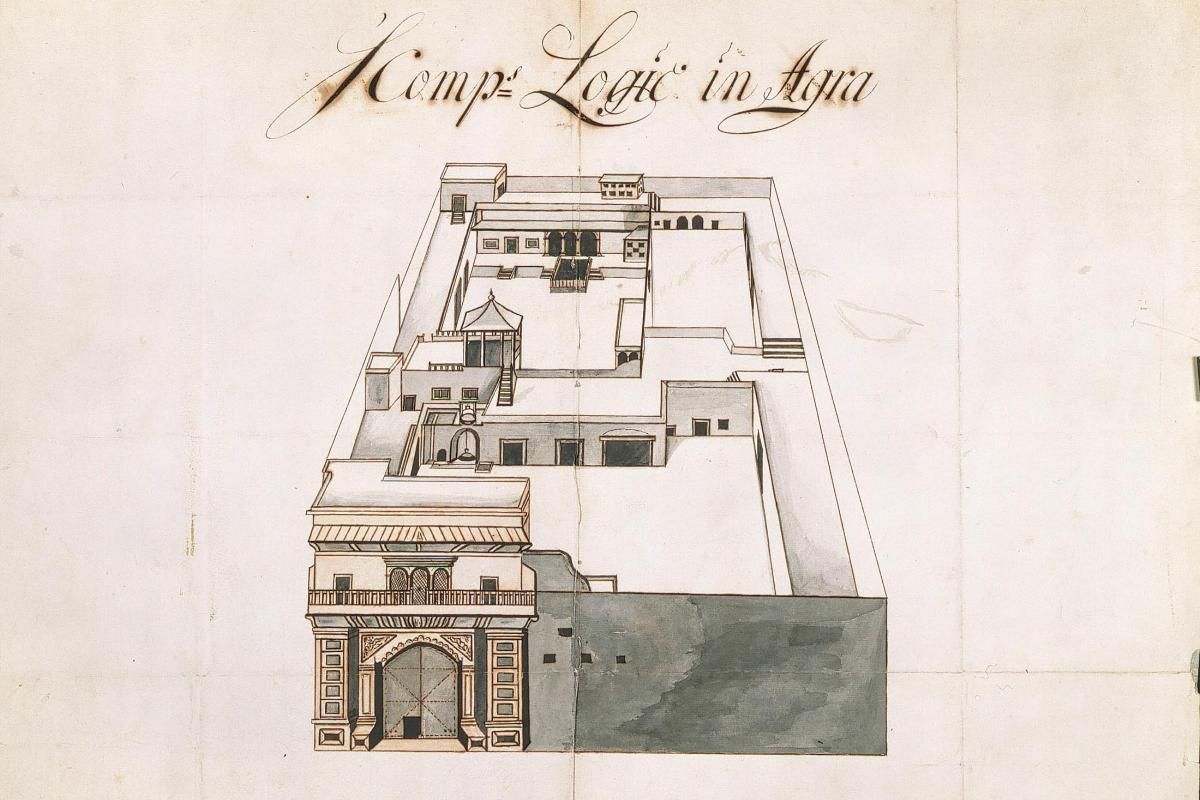
Agra - Remains of the Dutch Garden
In 1621 the VOC established a factory in Agra. The first head of the local VOC lodge was Wouter Heuten, who died in 1623 and was probably buried in the garden. Even though the Dutch were not on good terms with the English, they did offer them the opportunity to bury their dead in the garden of the Dutch lodge. The English had a factory in Agra, but no garden. It is believed that in the mid-nineteenth century, well after the departure of the Dutch from Agra in 1720, the St. Pauls Church was built on the site of the Dutch garden. In addition, a Protestant cemetery was created.
An English civil servant, E.A.H. Blunt, wrote in 1911 that in 1854 during the construction of the foundations for the St. Pauls Church in Agra, several burial monuments were found underground, including some without texts. Initially, the tombstones were to be placed south of the church and placed on a sandstone platform in the Protestant cemetery around 1875 (IND-038).[1]
Seven of the grave monuments found at the time still contained legible inscriptions; four for Dutch dead and three for English dead. Blunt supposes that one of the tombstones without a name could have been for Wouter Heuten. The oldest legible tombstone belonged to Justinian Ofley, a chief merchant for the English and died in 1627. The Dutch tombstones belonged to Jan de Boeck (living assistant, † 1647), Elisabeth Tack (wife of chief merchant Joan Tack, † 1649), Joan Tack van Amboyna (chief merchant, † 1663) and Pieter de Leeuw van Randerhuysen (accountant, † 1679).
According to Van de Pol, the funerary monuments are no longer legible these days.[2]
Header: Representation of the lodge of the Company at Agra. The original title according to catalogue Leupe reads: Afbeelding van 's Comps. Logie in Agra. Collection Nationaal Archief.
Notes
[1] Blunt, E.A.H. (I.C.S.), List of Inscriptions on Christian Tombs and Tablets of Historical Interest, in the United Provinces of Agra and Oudh; Allahabad, Government Press, 1911 (p. 58-60).
[2] Pol, Bauke van der, De VOC in India – Een reis langs Nederlands erfgoed in Gujarat, Malabar, Coromandel en Bengalen, Zutphen, Walburg Pers, 2011 (p. 27)
Reference: SC-IND-001
- Last updated on .


